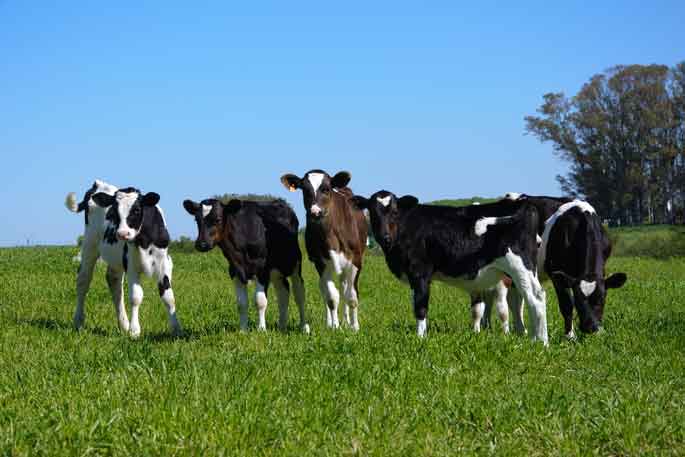Going forward to mating and peak production after a dull and wet winter and calving is a time that will require much thought and, most importantly, timely decisions that are actually actioned.
For organic livestock farmers this is the key to a good season, many of the tools used by organic farmers are finding their way into non-organic farms.
Often the comment is that organic farming does not allow the use of such and such, but from an organic perspective it’s more that organic farming removes the need for these interventions.
Challenging season
Stock heath in a season like this, where many farms seem to have low energy in the grass, animal health (intervention) and production can become costly, at a time when payout is also seemly challenged.
Both production and conception performance are influenced in the next few weeks for this season and next - short term decisions having both short and long-term effects.
General animal health is critical to production and performance.
This is not about having enough intervention tools; it’s about having a robust system. Functional nutrition is not just about dry matter intake, it’s the value of functionality of the intake.
Low sunshine, high soil moisture and cooler soils alter this, and the lower range of diet choice the more this is evident.
Organic focus
The focus for organic/biological farmers is to ensure innate behaviours can be carried out, livestock are browsers and will get essential elements from a wide range of plants, if available. Herbal ley (diverse) pastures, shrubs, trees, etc.
A focus for most organic farmers is to ensure both the planting and access to these aspects of the farm. Look at any tree/shrub/hedge line and note the graze zone.
To assist the animals in this free choice, products are also made available, often in small containers (half 20 litre drums) - these are indicator drums. If it is all gone quickly, make a bigger drum available.
Products offered may consist of lime flour, dolomite flour, some mineral salts, humates, biochar, seaweed (flakes/granules/liquid), clays (zeolite/bentonite) the essential thing is that these are separate - the stock chooses what they need - and boy do they choose.
This will change as needs are meet, demand changes as per weather, time from calving etc.
Good hay is, in my opinion, the most important product to always have available.
It can be in the exit race, in a trailer or in the paddock, as long as the stock can ‘indicate’, you can make the call to actually feed out rather than limited free choice. It might only be a few cows that take the hay - well they are the ones that need it that day.
Cow spit
Saliva production is a huge part of animal performance. I take it, you as a livestock farmer know how much spit a cow makes in a day. If not, Google it! The most important part of animal function, in my opinion.
Water quality is another area of importance often overlooked.
Is it worth paying a school kid or retired farmer to go round the toughs and keep them up to speck?
Another very important aspect is to ensure that ‘stray voltage’ is not impacting livestock in multiple ways. It does not matter if the shed is old or new, stray electricity has had impacts on many farms. One with a four year old shed, once tested and remediated, SCC dropped 200,000 and production went up 1 litre a cow a day.
The lost income was huge!
This can be caused by new equipment at the shed, poor earthing of an electric fence or placement (this could be on a neighbouring farm, a new transformer down the road. It can impact the milking area or the tough water system.
Imagine getting a ‘tickle’ every time you drink, this impacts intake and thus production.
To better understand this aspect, take a look at: www.strayvoltagetesting.net/ or talk to someone who has had a check/test.
I am yet to speak to a farmer post testing that was disappointed.
When planning the spring stored surplus feed regime ensure you include HAY, not just some form of pasture in some form of fermentation be it wrap, haylage, baleage, silage, ensilage or other product that is not sun dried hay.
Observe stock when given the choice!



0 Comments
Leave a Comment